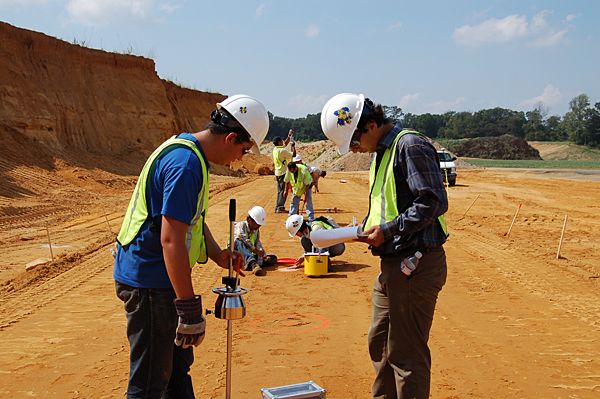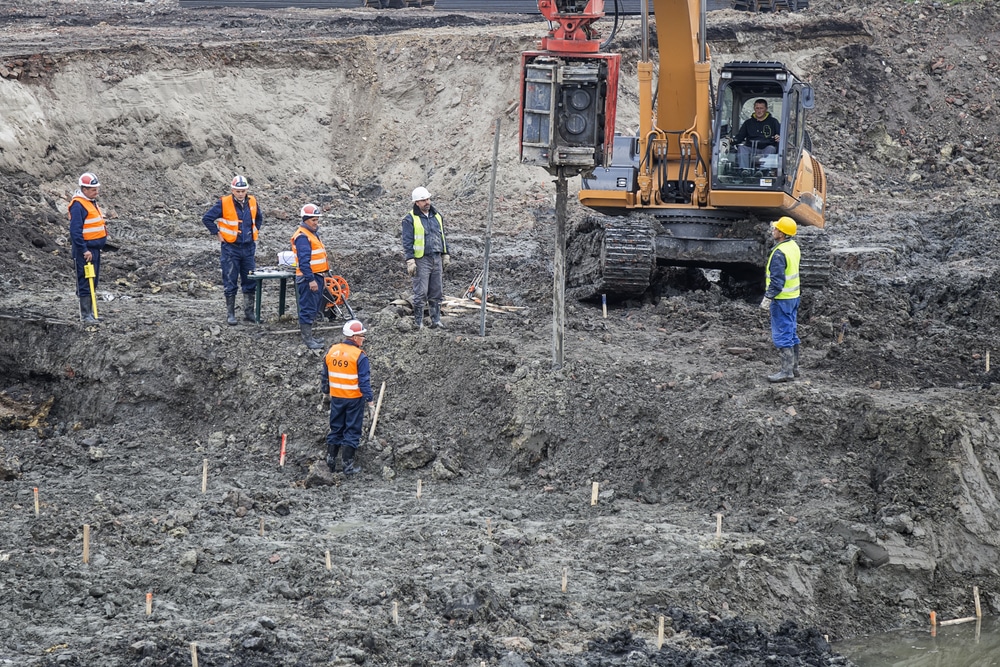Navigating the Complexities of Geotechnical Eng Projects
Wiki Article
Comprehending the Comprehensive Function of Geotechnical Engineers in Ground Investigation and Dirt Evaluation for Building And Construction Jobs
Geotechnical designers are integral to the success of construction tasks, giving necessary insights with detailed ground investigations and soil evaluation. Their proficiency in analyzing dirt habits and using innovative testing techniques notifies essential decisions that support structural honesty and safety.Function of Geotechnical Designers
The pivotal duty of geotechnical designers in building tasks can not be overstated, as they provide necessary understandings right into soil habits and site conditions. These specialists are tasked with assessing the viability of the ground for numerous kinds of structures, making certain security and stability throughout the construction procedure. Their know-how encompasses a vast array of tasks, consisting of site characterization, dirt tasting, and laboratory testing, which are important for figuring out the mechanical and physical homes of the dirt.Geotechnical designers use their findings to establish fundamental styles that suit load-bearing demands and reduce risks connected to dirt liquefaction, negotiation, and slope security. They play an important duty in determining potential threats, such as groundwater changes and contamination, which can substantially affect project feasibility. In addition, they work together with engineers, civil engineers, and specialists to guarantee that geotechnical considerations are incorporated right into the general layout and building and construction phases.
Ground Investigation Strategies
Ground investigation methods develop the backbone of geotechnical engineering, allowing designers to obtain an extensive understanding of subsurface problems. These techniques are vital for assessing soil residential or commercial properties, establishing groundwater levels, and identifying possible geological dangers.Usual methods include borehole exploration, which allows for the removal of soil samples at numerous midsts, providing essential information for evaluation. In addition, in situ screening strategies, such as Basic Infiltration Tests (SPT) and Cone Infiltration Tests (CPT), are used to review soil stamina and density straight in the ground.
Geophysical methods also play a significant role in ground investigations. Methods such as seismic studies and electric resistivity tomography help evaluate subsurface features without substantial excavation. geo tech engineering. These non-invasive techniques are especially advantageous in delicate or big areas where disturbance need to be reduced
Additionally, exploratory trenches can be excavated to visually evaluate dirt layers and determine any type of abnormalities. Each of these methods contributes distinct understandings, allowing geotechnical designers to develop accurate website assessments and educate design decisions. In recap, a mix of these ground examination methods is important for effective construction jobs, ensuring safety and architectural honesty.
Soil Evaluation Techniques
Soil evaluation approaches are important for understanding the chemical and physical homes of soil, which directly influence the design and building and construction of foundations and other frameworks. Different techniques are used to examine soil attributes, making sure that geotechnical engineers get accurate data for educated decision-making.One frequently utilized technique is grain dimension analysis, which figures out the circulation of bit sizes within a soil sample. This is vital for identifying dirt types and anticipating their behavior under load. An additional crucial strategy is Atterberg limits testing, which reviews the plasticity and moisture web content of fine-grained soils, supplying understandings into their engineering residential properties.

Area tests, such as Conventional Penetration Examinations (SPT) and Cone Penetration Tests (CPT), deal useful in-situ data regarding soil strength and stratification. Collectively, these soil analysis techniques create the foundation of geotechnical examination, enabling designers to develop safe and effective structures tailored to the specific conditions of the website.
Risk Mitigation Techniques
Carrying out effective risk mitigation techniques is necessary for geotechnical engineers to address prospective challenges in building tasks. These methods are essential in determining, analyzing, and taking care of dangers associated with dirt problems, site stability, and groundwater variations, which can detrimentally impact project results.One key strategy entails performing complete site examinations that utilize innovative civil consulting engineers geophysical strategies and extensive soil tasting. By obtaining accurate data on subsurface problems, engineers can make informed decisions on style and building approaches. Furthermore, employing predictive modeling tools enables the simulation of various situations, allowing designers to foresee possible troubles and implement preventive measures.
Additionally, establishing clear interaction channels among project stakeholders promotes a joint technique to run the risk of management. Normal updates and examinations make certain that all celebrations are mindful of the developing website problems and can adjust their strategies accordingly.

Effect On Building Tasks
The effectiveness of risk reduction strategies directly affects the total success of building projects. Geotechnical designers play a pivotal duty in this domain, as their experience in ground examination and soil evaluation educates critical choices throughout the building process. By precisely analyzing dirt conditions and identifying prospective threats, these professionals make it possible for project groups to create reliable services that reduce threats related to ground instability, water infiltration, and other geotechnical difficulties.The influence of extensive geotechnical analysis is noticeable in numerous aspects of construction jobs, including cost management, project timelines, and architectural honesty. Early recognition of problems permits prompt interventions, decreasing expensive hold-ups and budget overruns. A comprehensive understanding of website conditions enhances the design and design process, guaranteeing that structures are constructed to withstand ecological pressures and prospective all-natural calamities.
Eventually, the payments of geotechnical engineers are important to the successful execution of construction projects. Their job not just fosters safety and security and compliance with policies yet likewise improves the lasting sustainability of frameworks, guaranteeing that they do properly throughout their designated life expectancy. The partnership in between geotechnical groups and other stakeholders is vital for accomplishing optimum end results in building undertakings.
Verdict
In verdict, geotechnical engineers do an essential feature in building jobs with comprehensive ground investigations and soil evaluations. Their knowledge in assessing dirt actions, using numerous examination strategies, and carrying out threat reduction methods significantly adds to the architectural stability and security of developed atmospheres. By collaborating with multidisciplinary groups, these professionals improve task efficiency and ensure compliance with security requirements, eventually leading to effective construction end results and lowered possible threats.Geotechnical designers are important to the success of construction projects, supplying crucial insights through thorough ground investigations and soil analysis.The critical role of geotechnical engineers in building projects can not be overstated, as they supply necessary understandings right into dirt habits and website conditions. Their proficiency includes a wide variety of tasks, including website characterization, soil tasting, and research laboratory testing, which are essential for establishing the physical and mechanical residential or commercial properties of the dirt.
By accurately assessing soil problems and recognizing prospective hazards, these professionals enable job groups to design efficient remedies that lower risks associated with ground instability, water seepage, and various other geotechnical difficulties.
In final thought, geotechnical designers perform a critical function in construction jobs with comprehensive ground investigations and dirt analyses.
Report this wiki page